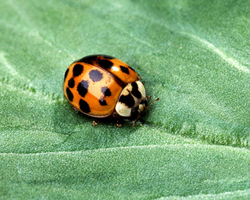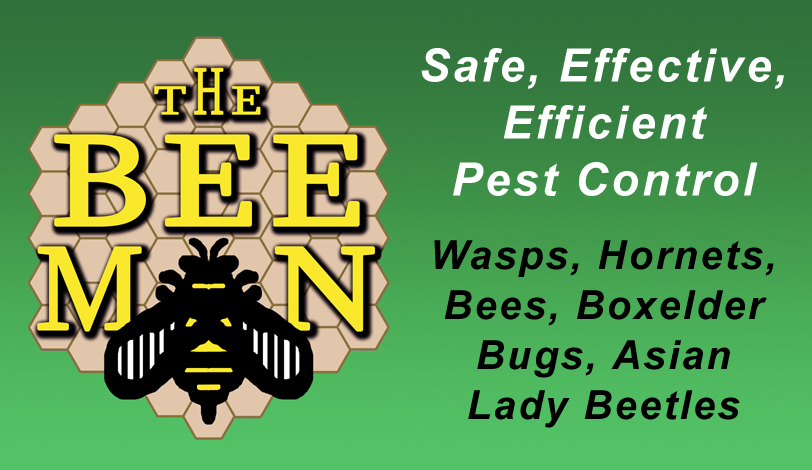
The multi-colored Asian lady beetle is actually native to Asia. The United States imported this little critter in the early 1900s to control the population of certain insect pests. The first wild population, in Wisconsin, was discovered in the mid-1990s. The Asian lady beetle is an effective, natural control for harmful plant pests such as aphids and helps to reduce the need for harmful pesticides on our foods. On average, one Asian lady beetle can eat over 5,000 aphids in its lifetime.
Asian lady beetles look like typical “ladybugs,” but they vary in color from red to yellow to orange, with or without black spots on their wings. When not flying, these wings conform to the body, making the spots appear to be on their backs. They are oval, convex and about ¼” long.
Asian lady beetles like many plants, such as evergreens, apple and maple trees, alfalfa, wheat, cotton, tobacco, and small grains. In Southeast Wisconsin, they are usually found around soybean fields.
They lay their eggs on the underside of leaves in a clump. When the larvae hatch, it voraciously eats aphids and other arthropods for about 12-14 days. Pupation lasts 5 to 6 days until adults emerge. Adult beetles can live as long as 2 to 3 years.
In the fall, they begin looking for protected areas to “overwinter.” Unfortunately, one of their favorite locations to is in the walls of our homes. They are attracted to light colored surfaces and will most likely be found, on a warm fall afternoon, on the south side (the warm, sunny side) of structures. Typical entrance points include cracks around window and doorframes, behind fascia boards and exterior siding, and within soffits, attics, and wall voids. During warm winter or early spring days, they may become active in the walls and inadvertently enter the interior of your homes. They are merely trying to get outside. Rest assured though, they do not cause structural damage, nor do they mate or lay eggs in the walls. They will, however, bite if mishandled, but it is only a pinch. Be careful not to squash them, as they emit a yellow fluid with an unpleasant odor when threatened. This is designed to keep predators away. It can permanently stain walls and fabric! These beetles will not eat our clothing, nor do they want our food.
Even though these beneficial little beetles are harmless, people find their presence annoying and want to eliminate them from their homes. In the fall, we do a crack and crevice treatment that will keep the majority of the beetles from entering the house for the winter. Please contact our office for more information.






